Higher classification Lion | ||
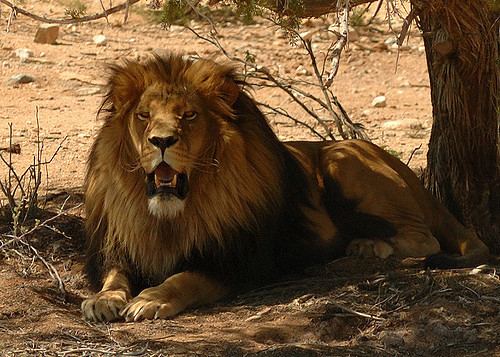 | ||
Scientific name Panthera leo melanochaitus Similar Transvaal lion, American lion, Barbary lion | ||
The Cape lion is possibly an extinct subspecies of lion, with the taxonomic name "Panthera leo melanochaitus," that was closely related to the Kalahari lion, or a former population of Transvaal lions (Panthera leo krugeri). Even if the phrase "Panthera leo melanochaita" were to refer to a genetic clade of lions that includes the 'black-maned' Cape lion, Panthera leo melanochaita would nevertheless be distinct from Panthera leo leo.
Contents
- South africa lion cubs thought to be cape lions
- Taxonomy
- Physical description
- Behaviour and diet
- Habitat and extinction
- Possible descendants and look alikes
- References
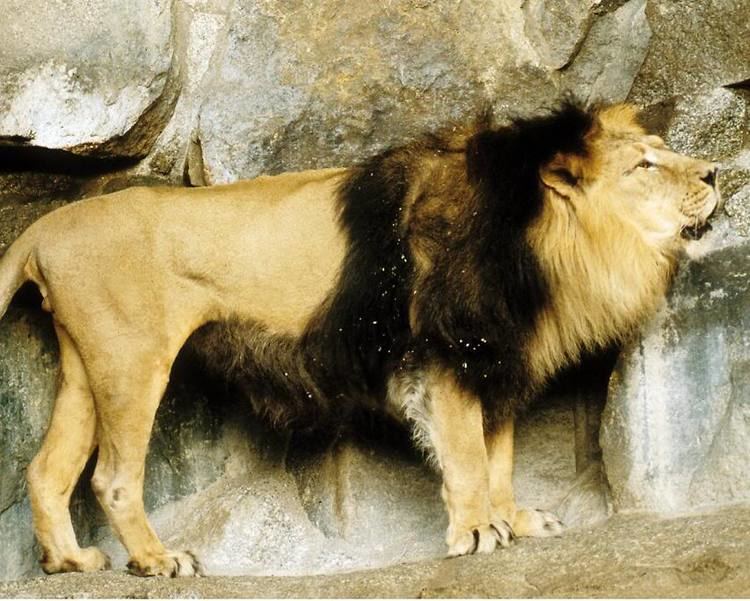
South africa lion cubs thought to be cape lions
Taxonomy
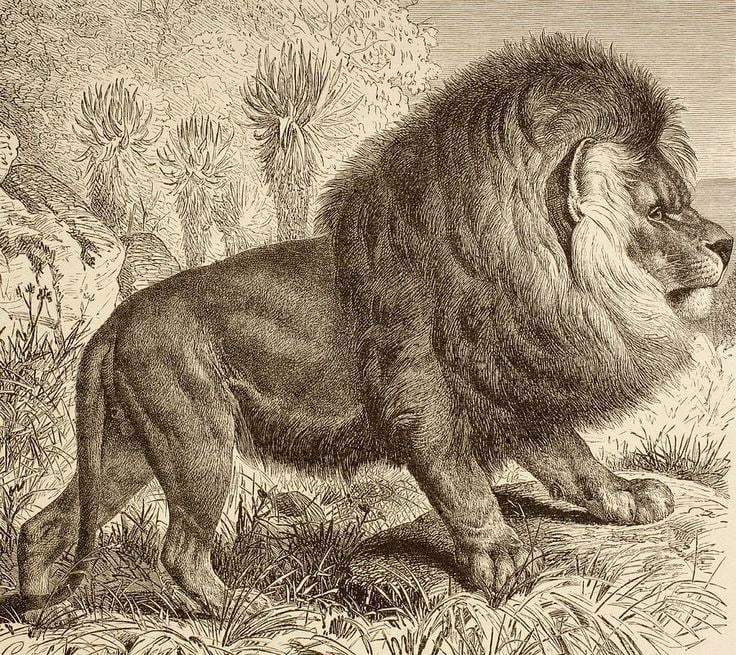
As with the Barbary lion, several people and institutions claim to have Cape lions. There is much confusion between Cape lions and other dark-coloured long-maned captive lions. Dark-maned lions in captivity today have been bred and cross-bred from lions captured in Africa long ago, with examples from all of these 'subspecies'. Mixed together, hybridized, most of today's captive lions have a 'soup' of alleles from many different lion subspecies.
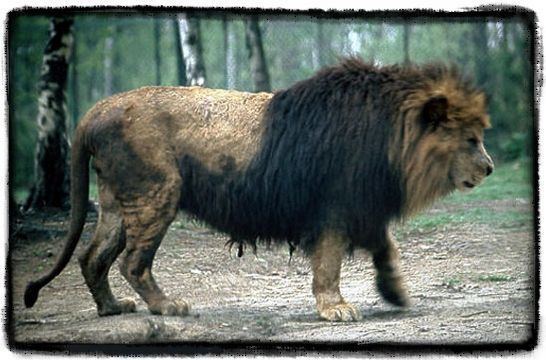
Early authors justified 'distinct' subspecific status of the Cape lion because of the seemingly fixed external morphology of the lions. Males had a huge mane extending behind their shoulders and covering the belly, and the lions' ears also had distinctive black tips. However, nowadays it is known that various extrinsic factors, including the ambient temperature, influence the colour and size of a lion's mane. Results of mitochondrial DNA research published in 2006 do not support the 'distinctness' of the Cape lion. It may be that the Cape lion was only the southernmost population of the extant Transvaal lion, or that it was closely related to Kalahari lions (possibly Panthera leo krugeri or Panthera leo bleyenberghi), a number of which had black manes (Rodrigues, 1997).
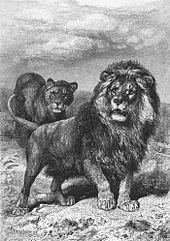
According to Hershkovitz (1966), genetic material between Eastern (Panthera leo azandica and Panthera leo massaica) and Southern African lions was quite similar, though a genetic and phenotypic analysis on captive Addis Ababa lions showed that they were distinct from wild lions. As for Central-West African lions, they appeared to be more closely related to North African and Asiatic lions than to other Sub-Saharan African lions. Therefore, if the subspecies of lions had to be reclassified according to close relationships, then the Senegal, Barbary and Asiatic subspecies would be reclassified as Panthera leo leo, and lions from Eastern and Southern Africa would be reclassified as Panthera leo melanochaita, but some taxonomic questions are not yet solved.
Physical description
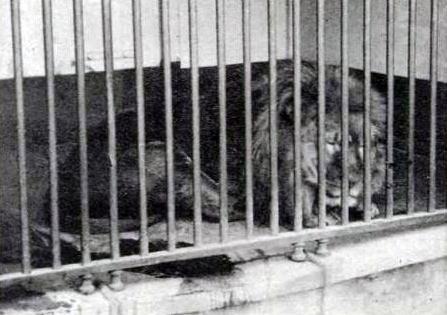
The Cape lion was thought by some people to have been large or heavy compared to other Sub-Saharan African lions, but smaller than the North African lion, though this may not have always been the case. It was distinguished by its thick, black mane with a tawny fringe around the face. The tips of the ears were also black. Besides Atlas lions, they had the "most luxuriant and extensive manes" amongst lions, with "tresses on flanks and abdomen," according to Hepnter and Sludskii (1972).
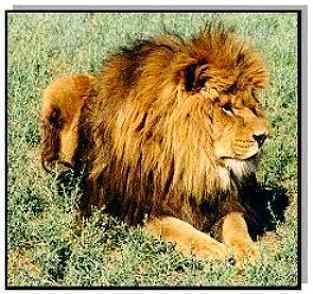
Lions approaching 272 kg (600 pounds) were shot south of the Vaal River (Pease, 1913, page 91). An emasculated lion in Surrey Zoological Gardens, brought from Kaffraria, was described by Jardine (1834) as being "much larger than either the Barbary or Persian lion."
Behaviour and diet
Cape lions preferred to hunt large ungulates including antelopes, but also zebras, giraffes and buffaloes. They would also kill donkeys and cattle belonging to the European settlers. Man-eating Cape lions appear to have generally been old individuals with bad teeth.
Habitat and extinction
'Black-maned' Cape lions ranged along the Cape of Africa on the southern tip of the continent. The Cape lion was not the only subspecies of lion, or population of Transvaal lions, living in South Africa, and its exact range is unclear. Its stronghold was Cape Province, in the area around Cape Town. One of the last Cape lions seen in the province was killed in 1858; in 1876 Czech explorer Emil Holub bought a young lion who died two years later.
The Cape lion disappeared so rapidly following contact with Europeans that it is unlikely that habitat destruction was a significant factor. The Dutch and English settlers, hunters, and sportsmen simply hunted it into extinction.
Possible descendants and look-alikes
In 2000, specimens asserted to be descendants of Cape lions were found in captivity in Russia, and two of them were brought to South Africa. South African zoo director John Spence reportedly was long fascinated by stories of these grand lions scaling the walls of Jan van Riebeeck's castle in the 17th century. He studied van Riebeeck's journals to discern Cape lions' features, which include a long black mane, black in their ears, and larger size. He believed some Cape lions might have been taken to Europe and interbred with other lions. His 30-year search led to his discovery of black-maned lions closely resembling Cape lions at the Novosibirsk Zoo in Siberia, in 2000. Besides having a black mane, the specimen that attracted Spence had a "wide face and sturdy legs." Novosibirsk Zoo's population, which had 40 cubs over a 30-year period, continues, and Spence was allowed to bring two cubs back to his zoo in South Africa. Back in South Africa, Spence explained that he hoped to breed lions that at least looked like Cape lions, and also hoped to have DNA testing done to establish whether the cubs were descendants. Spence died in 2010 and the zoo closed in 2012, with the lions expected to go to Drakenstein Lion Park.
